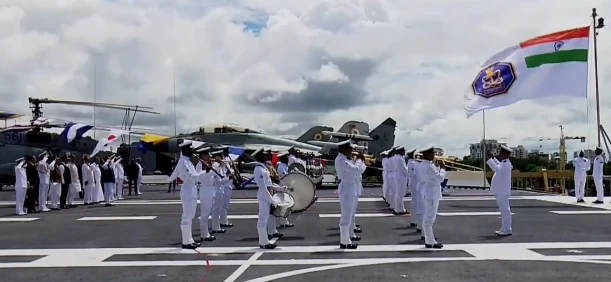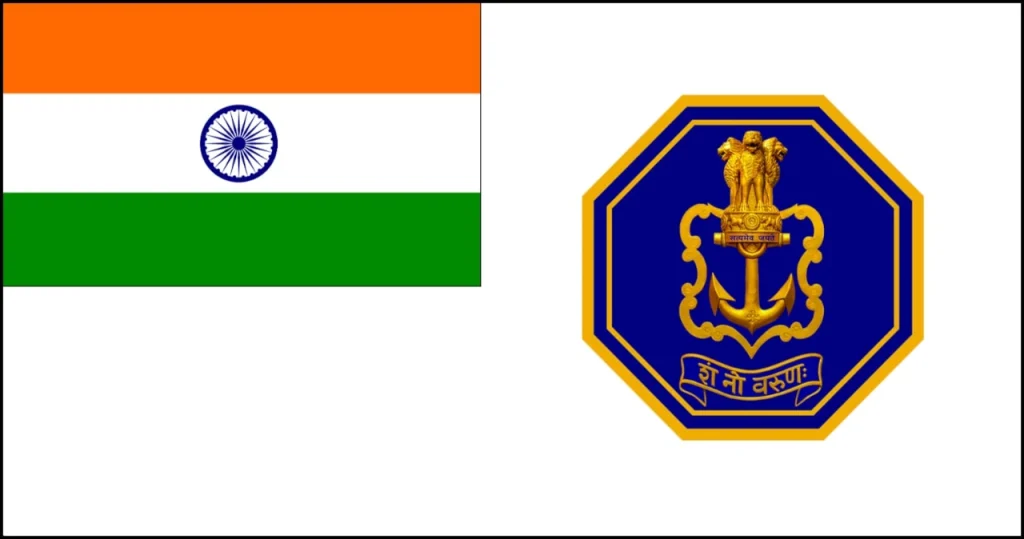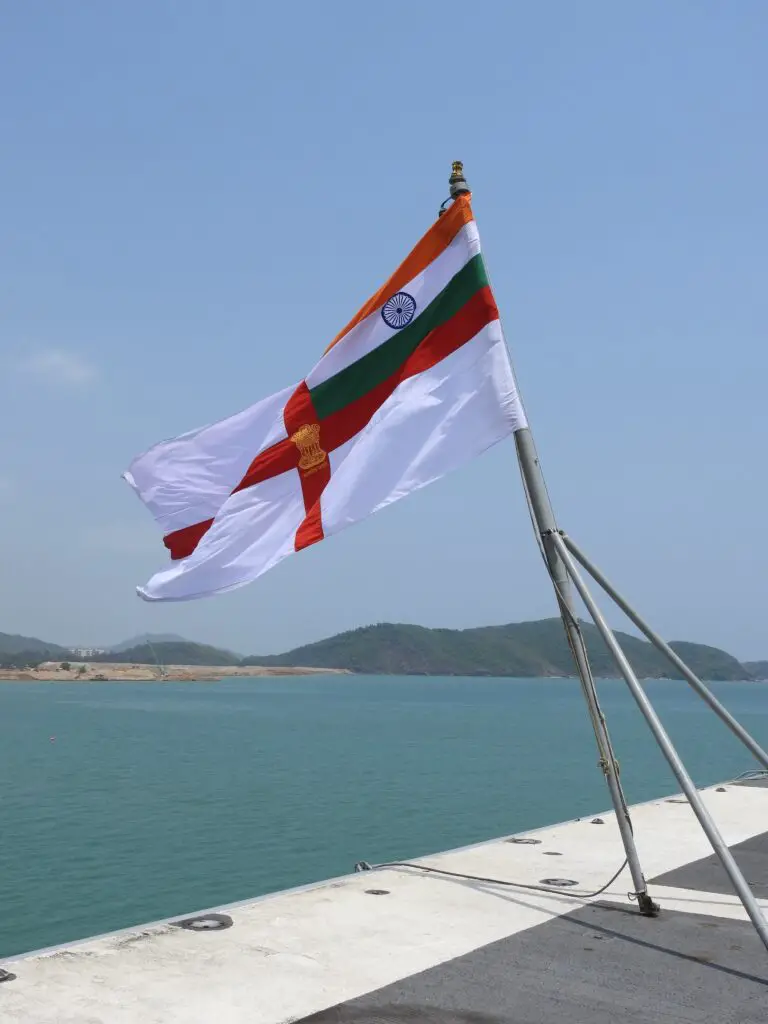India officially commissioned its first domestically-built aircraft carrier INS Vikrant on Friday, the culmination of 17 years of construction and testing as the country seeks to catch up with regional rival China and its well-established naval fleet.

Designed by the Indian Navy, the aircraft carrier is the largest warship to be built in the country, capable of accommodating a crew of around 1,600 and operating a fleet of 30 aircraft, including aircraft from fighters and helicopters.
No carrier fleet
However, INS Vikrant will not have its fleet of combat aircraft on deck and will instead rely on a few Russian-designed aircraft borrowed from India’s only other carrier, INS Vikramaditya. Around 40 Russian-made MiG-29Ks are in service in India, mostly aboard the Vikramaditya, a modified Russian cruiser. Some of these fighters are currently being shifted to the Vikrant.
India’s generally confusing decision-making process saw that the selection of an aircraft was separated from the aircraft carrier project, and a decision is yet to be made. The defense purchase related decision making has worsened in the past decade. This aspect is visible in all capital purchases of the Indian Armed Forces. In addition, there are no new projects announced for the coming decade.
The Vikrant also lacks a naval radar system, as seen in the recent images released by the Navy.
Indian Content
More than 75% of the ship’s components are sourced domestically, with half a dozen major industrial companies and more than 100 smaller companies supplying equipment and machinery, according to India’s defense ministry.
One important aspect of the ship’s construction is that it was made with Indian steel. SAIL supplies steel in the form of unique DMR grade Plates. SAIL produced these DMR grade plates in conjunction with the Indian Navy and DMRL. This warship’s hull and vessel interiors were made of DMR plates of Grade 249 A, while the flying deck was made of DMR plates of Grade 249 B. Except for the bulb bars, all of the specialised steel has been provided by SAIL’s integrated steel factories in Bhilai, Bokaro, and Rourkela. The specific grade steel, DMR plates, utilised in the building of the INS Vikrant is import substitution.
Deployment against the main rival
With the entry into service of the Vikrant, India can deploy an aircraft carrier on both its eastern and western seaboard and expand its maritime presence, although the Indian Navy still lags behind its main regional rival China.
The world’s two most populous nations share a contentious border, where violent clashes between their military forces occurred in 2020.
The Chinese People’s Liberation Army Navy has about 355 ships, including two aircraft carriers, about 48 destroyers, 43 frigates and 61 corvettes. In June, China launched its third aircraft carrier, which features a full-length flight deck with a catapult launch system – unlike India’s smaller aircraft carriers which use ski jumps.
India’s current fleet comprises one aircraft carrier, ten destroyers, 12 frigates and 20 corvettes.
New Ensign
On September 22, at the commissioning of INS Vikrant, a new Naval Ensign was presented, which would adorn the new White ensign with effect from its commissioning.
The Indian Navy’s formations, ships, and installations would adopt the new Naval ensign, as well as new identifying flags, vehicle flags, and masthead pennants.
In keeping with the continuing national effort to break away from the colonial past, it was thought necessary to shift to a new design that took inspiration from the Indian history. To answer this need, the whole Navy was asked to provide design advice. Responses came in from Naval personnel of all units and hierarchies, demonstrating excitement for the endeavour and assisting in the development of the new Naval flag design. The White Ensign, which is associated with the Navy throughout the country, currently consists of two principal constituents: the National Flag in the top left canton and a Navy Blue-Gold octagon in the centre of the fly side, which is away from the staff.

The Octagon is surrounded by twin golden octagonal borders that encircle the golden National Emblem (Lion Capital of Ashoka – inscribed with ‘Satyamev Jayate’ in blue Devnagri script) lying on an anchor and overlaid on a shield. Below the shield, inside the Octagon, on a Navy Blue backdrop, is engraved in golden Devnagri script the Indian Navy’s slogan ‘Sam No Varunah.’ The design inside the Octagon is based on the Indian Naval crest, where the fouled anchor, which is also connected with the colonial past, has been replaced with a clean anchor, emphasising the Indian Navy’s steadiness. The Navy Blue colour of the above octagonal shape represents the Indian Navy’s Blue Water capability. The twin octagonal borders are inspired by the Seal of Chhatrapati Shivaji Maharaj, one of the renowned Indian monarchs with a visionary nautical view who constructed a respectable Naval Fleet that gained reluctant appreciation from European Navies operating in the area at the time. The Octagonal form also reflects the eight cardinal and intercardinal directions, symbolising the Indian Navy’s worldwide reach. The Octagon represents good fortune, eternity, and rejuvenation, and it attracts positive energy from all directions. The new Naval White Ensign is so steeped in India’s historic nautical tradition while also reflecting Navy’s current capabilities.

The former Indian Naval Ensign had the National Flag in the top left canton, red vertical and horizontal stripes, and a golden yellow State Emblem placed over the junction of the red stripes as a mark of national pride. The national slogan ‘Satyamev Jayate’ was carved in the Devanagari script underneath the State Emblem. This White flag was flown by the Indian Navy’s formations, ships, and installations till September 1, 2022.
